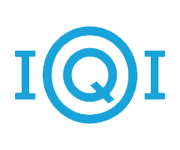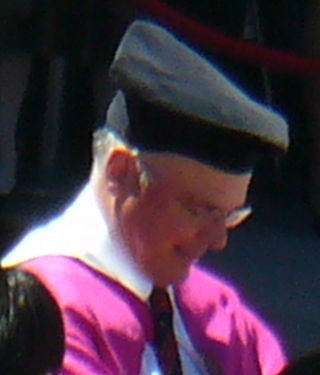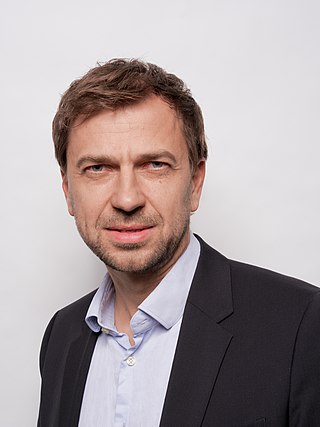
Anton Zeilinger is an Austrian quantum physicist and Nobel laureate in physics of 2022. Zeilinger is professor of physics emeritus at the University of Vienna and senior scientist at the Institute for Quantum Optics and Quantum Information of the Austrian Academy of Sciences. Most of his research concerns the fundamental aspects and applications of quantum entanglement.

Ferenc Krausz is an Austrian-Hungarian physicist working in attosecond science. He is a director at the Max Planck Institute of Quantum Optics and a professor of experimental physics at the Ludwig Maximilian University of Munich in Germany. His research team has generated and measured the first attosecond light pulse and used it for capturing electrons' motion inside atoms, marking the birth of attophysics. In 2023, jointly with Pierre Agostini and Anne L'Huillier, he was awarded the Nobel Prize in Physics.

Rainer Blatt is a German-Austrian experimental physicist. His research centres on the areas of quantum optics and quantum information. He and his team performed one of the first experiments to teleport atoms, the other was done at NIST in Boulder Colorado. The reports of both groups appeared back-to-back in Nature.

Peter Zoller is a theoretical physicist from Austria. He is professor at the University of Innsbruck and works on quantum optics and quantum information and is best known for his pioneering research on quantum computing and quantum communication and for bridging quantum optics and solid state physics.

Juan Ignacio Cirac Sasturain, known professionally as Ignacio Cirac, is a Spanish physicist. He is one of the pioneers of the field of quantum computing and quantum information theory. He is the recipient of the 2006 Prince of Asturias Award in technical and scientific research.
The Ignaz Lieben Prize, named after the Austrian banker Ignaz Lieben, is an annual Austrian award made by the Austrian Academy of Sciences to young scientists working in the fields of molecular biology, chemistry, or physics.

Hugo Weidel was a chemist from Austria-Hungary known for inventing Weidel's reaction and describing the structure of the organic compound niacin. For his achievements, Weidel received the Lieben Prize in 1880.

The Institute for Quantum Optics and Quantum Information (IQOQI) (German: Institut für Quantenoptik und Quanteninformation) is a member institute of the Austrian Academy of Sciences and was founded in November 2003, to create an Austrian research center for the newly developing fields of theoretical and experimental quantum optics and quantum information.
Girish S. Agarwal, Fellow of the Royal Society UK, is a theoretical physicist. He is currently at the Texas A & M University with affiliations to the Departments of Biological and Agricultural Engineering, Physics and Astronomy, and the Institute for Quantum Science and Engineering. Earlier he worked as Noble Foundation Chair and the Regents Professor at the Oklahoma State University. He is a recognized leader in the field of quantum optics and also has made major contributions to the fields of nonlinear optics, nanophotonics and plasmonics. In 2013 he published the textbook "Quantum Optics", covering a wide range of recent developments in the field, which has been well received by the community.

Frank Verstraete is a Belgian quantum physicist who is working on the interface between quantum information theory and quantum many-body physics. He pioneered the use of tensor networks and entanglement theory in quantum many body systems. He holds the Leigh Trapnell Professorship of Quantum Physics at the Faculty of Mathematics, University of Cambridge, and is professor at the Faculty of Physics at Ghent University.
Hans Leopold Meyer was an Austrian chemist. He was the brother of Stefan Meyer who also received the Lieben Prize. Hans Leopold Meyer studied at the Technische Universität Bergakademie Freiberg, Vienna University of Technology and University of Heidelberg he received his PhD in 1894. He started as a lecturer at the Vienna University of Technology, and professor at the German University in Prague. He was a member of the German Academy of Sciences Leopoldina and he received the Lieben Prize in 1905, seven years before his younger brother Stefan Meyer received the prize in 1913. He was killed in the Theresienstadt concentration camp end of 1942.
Muhammad Suhail Zubairy, HI, SI, FPAS, is a University Distinguished Professor as of 2014 in the Department of Physics and Astronomy at the Texas A&M University and is the inaugural holder of the Munnerlyn-Heep Chair in Quantum Optics.
Vlatko Vedral is a Serbian-born British physicist. He is best known for his contributions to quantum information theory, quantum mechanics, and quantum entanglement. He earned his Bachelor of Science and Doctor of Philosophy degrees from Imperial College London, where he graduated with a PhD in 1998.
An active researcher, Vedral has over 500 published, regularly cited papers to his name. This output covers a broad range of topics within quantum physics, including quantum computing, quantum cryptography, and quantum thermodynamics. In recognition of his scholarly achievements, he was honoured with the Royal Society Wolfson Research Merit Award in 2007. Throughout his career, Vedral has held a number of academic positions, including lectureships and readership at Imperial College London, a professorship at the University of Leeds, and visiting professorships at institutions worldwide, including Vienna, Singapore, and Beijing. Since 2009, Vedral has served as Professor of Quantum Information Science in the Department of Physics at the University of Oxford. Additionally, he is a Governing Body Fellow of Wolfson College, Oxford.
In addition to his academic work, Vedral has made efforts to popularise and communicate complex scientific concepts to a broader audience. He frequently gives talks on quantum physics and its implications for society, as well as writing for mainstream journals and participating in vlogs, podcasts, and documentaries. Vedral has also written several textbooks and two popular science books, most notably Decoding Reality.
Mikhail Lukin ; born 10 October 1971) is a Russian theoretical and experimental physicist and a professor at Harvard University. He was elected a member of the National Academy of Sciences in 2018.

David A. B. Miller is the W. M. Keck Foundation Professor of Electrical Engineering at Stanford University, where he is also a professor of Applied Physics by courtesy. His research interests include the use of optics in switching, interconnection, communications, computing, and sensing systems, physics and applications of quantum well optics and optoelectronics, and fundamental features and limits for optics and nanophotonics in communications and information processing.
Jelena Vučković is a Serbian-born American professor and a courtesy faculty member in the Department of Applied Physics at Stanford University. She served as Fortinet Founders Chair of the Department of Electrical Engineering at Stanford University from August 2021 through June 2023. Vučković leads the Nanoscale and Quantum Photonics (NQP) Lab, and is a faculty member of the Ginzton Lab, PULSE Institute, SIMES Institute, and Bio-X at Stanford. She was the inaugural director of the Q-FARM initiative. She is a Member of the National Academy of Sciences, and a Fellow of The Optical Society, the American Physical Society and the Institute of Electrical and Electronics Engineers.
Časlav Brukner is a Serbian-Austrian quantum physicist and university professor.
Barbara Kraus is an Austrian physicist specializing in quantum information, quantum entanglement, and quantum key distribution. She is a University Professor at the TUM School of Natural Sciences at the Technical University of Munich.
Crystalline coatings are a type of thin-film optical interference coating that is made by merging monocrystalline multilayers deposited via processes such as molecular-beam epitaxy (MBE) and metalorganic vapour-phase epitaxy (MOVPE) with microfabrication techniques including direct bonding and selective etching. In this technique heterostructures such as gallium arsenide / aluminum gallium arsenide (GaAs/AlGaAs) distributed Bragg reflectors (DBRs) are grown and then transferred to polished optical surfaces, resulting in high-performance single-crystal optical coatings on arbitrary, including curved, substrates. As of 2024 the maximum diameter achieveable is 20 cm, limited by commercially-available GaAs wafers. The tightest curvature demonstrated for such coatings is 5 cm.

Wolfgang Lechner is a theoretical physicist from Austria. He is the co-founder and co-CEO of the company ParityQC and professor at the Institute for Theoretical Physics of the University of Innsbruck.










